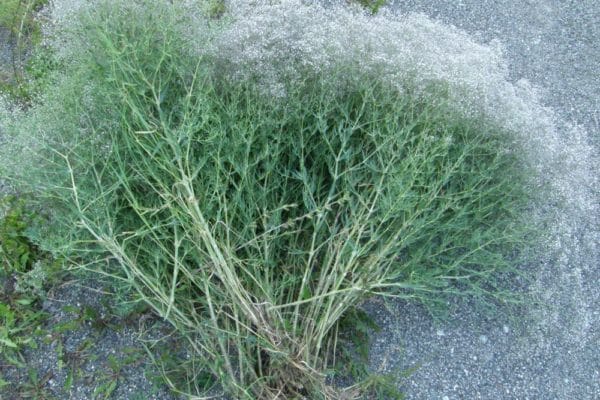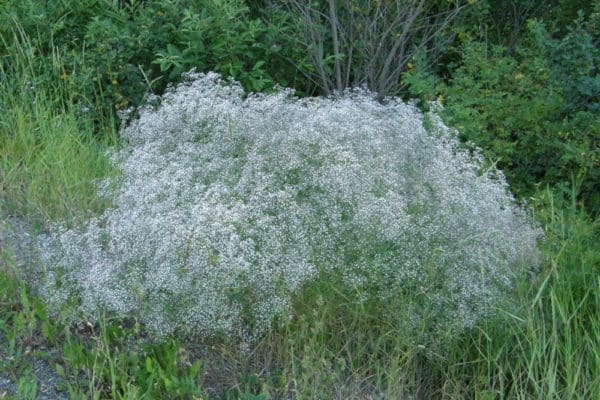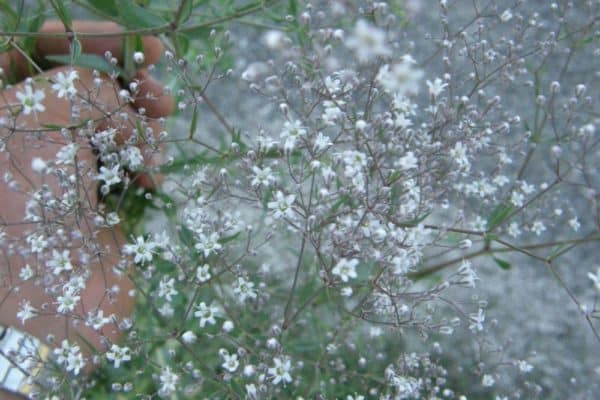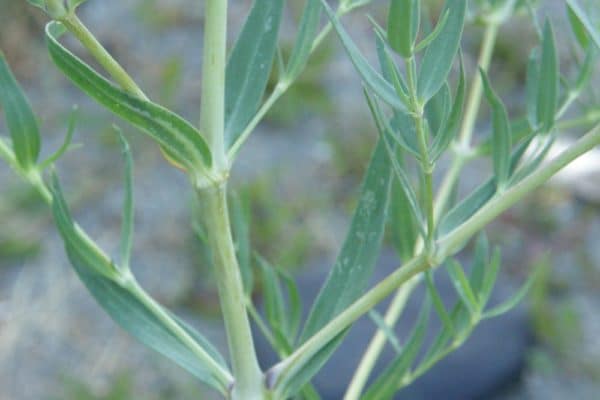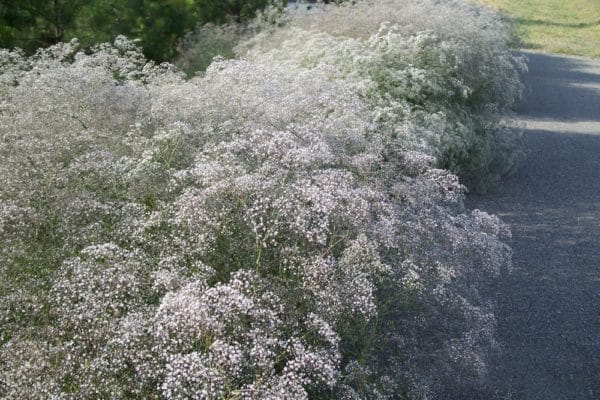Baby’s breath
About This Species
Baby’s breath (Common gypsophila) is an escaped ornamental plant native to Europe. It thrives in basic to neutral soils with full sun. Baby’s breath is frequently used in floral arrangements and if you have a bouquet including it, make sure not to dispose of it in the compost.
When Baby’s breath invades grazing land, it reduces native grasses and forage for grazing animals and wildlife. When it develops seeds and matures, the plant breaks off at the ground and rolls long distances across the landscape with the ability to spread over 10,000 seeds per plant!
How to Identify
Baby’s breath is a slender, twiggy perennial plant. It can grow 0.4 to 1.2 m tall as a mound shaped bush.
Flowers are very numerous on highly branched inflorescences. Each flower is tiny (6-8 mm), star-shaped with five petals, and is white to light pink.
Leaves are opposite each other, silvery-green and narrow. They measure approximately 2.5-5.0 cm long and can be smooth or hairy. When Baby’s breath is in flower, the leaves are often not noticeable.
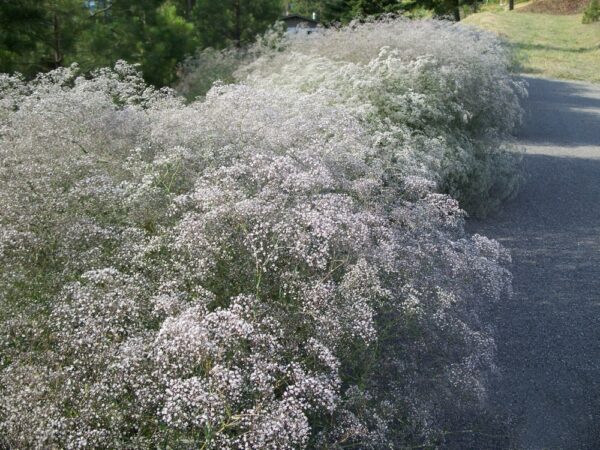
Take Action
Prevention is the best approach.
-
If you need advice about invasive species on your property or you are concerned about reported invasives in your local area, contact your local government or regional invasive species organization.

PlayCleanGo
Learn about best practices

Plantwise
Learn about best practices
A few non-invasive alternatives to plant instead of Baby’s breath include:
- Filigran russian sage (Perovskia atriplicifolia)
- German statice (Goniolimon tataricum)
- Hybrid yarrow (Achillea millefolium hybrids)
- Pearly everlasting (Anaphalis margaritacea)
- Sea lavender (Limonium latifolium)
REPORT TO PROTECT BC’S BIODIVERSITY
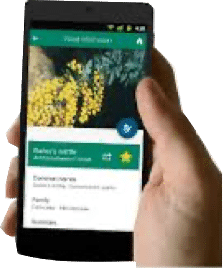
Use the app
Observe and report to protect BC’s biodiversity

Report through this website
Use our form to tell us what you’re seeing and where.



